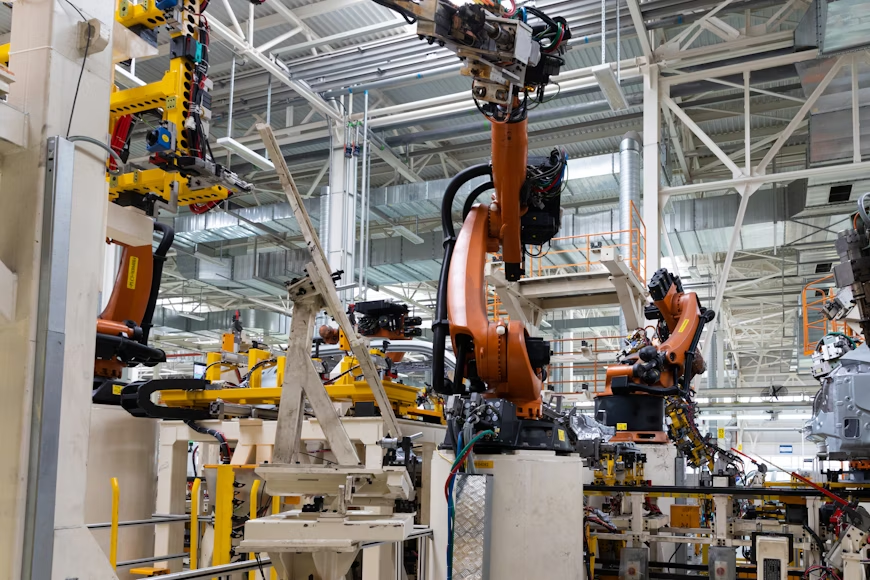Smart Winding, How AI and Automation Are Reshaping Industry
Winding techniques have been at the heart of various industries for decades, playing a crucial role in manufacturing processes from electrical components to advanced machinery. As the demand for efficiency and precision grows, so does the need for innovative winding solutions. The evolution of these methods has led to groundbreaking advancements that not only enhance productivity but also redefine what is possible with coil winding technology.
Whether you’re a seasoned engineer or just curious about how things are made, understanding these advanced winding techniques can provide valuable insights into their applications and benefits across different sectors. Get ready to explore the fascinating journey of coil winding machine manufacturers and discover how it continues to shape industries today!
Historical Evolution of Winding Technology
Winding technology has roots that trace back to ancient times. Early artisans used simple hand tools, coiling materials like wire and thread manually. This labor-intensive method was time-consuming but served as the foundation for more sophisticated processes.
The Industrial Revolution marked a significant turning point. Machinery began to take center stage, streamlining production and increasing efficiency. The introduction of powered winding machines allowed manufacturers to scale operations rapidly.
In the 20th century, innovation soared with advances in electronics and automation. Programmable logic controllers (PLCs) transformed winding machines into smart devices capable of intricate designs.
Today’s coil winding machine manufacturers continue this legacy by integrating cutting-edge technologies such as robotics and artificial intelligence. These advancements not only enhance precision but also reduce waste in manufacturing processes, paving the way for sustainable practices in industries worldwide.
Advancements in Winding Techniques for Different Industries
Winding techniques have significantly evolved across various industries. The rise of automation has revolutionized production lines, allowing for greater precision and efficiency.
In the aerospace sector, advanced winding processes ensure lightweight components without compromising strength. This is crucial for aircraft performance and fuel efficiency.
The renewable energy industry benefits from improved winding methods in the manufacture of coils used in wind turbines and solar panels. Efficiency here translates directly to better energy conversion rates.
Electronics manufacturers utilize sophisticated winding machines that produce compact yet powerful inductors and transformers. These innovations support miniaturization trends while enhancing electrical performance.
Medical devices also see tailored winding solutions that meet strict regulatory demands while ensuring reliability and safety in critical applications. Customization options are key to meeting diverse needs within this field.
As demand grows, so does the need for specialized machinery designed by leading coil winding machine manufacturers who understand these evolving requirements.
Machine Applications of Advanced Winding Techniques
Advanced winding techniques are revolutionizing various machine applications across multiple industries. In the realm of electric motors, precise coil placement is crucial for optimal performance. Utilizing sophisticated winding machines enhances efficiency and accuracy in these components.
In renewable energy, wind turbine generators benefit significantly from advanced winding processes. These techniques ensure better power output and durability under extreme conditions.
The automotive sector also embraces innovation with electric vehicle (EV) battery manufacturing. Winding technologies allow for compact designs that improve space utilization while maximizing energy storage capabilities.
Moreover, medical devices rely on finely tuned coils for their functionality. Advanced methods create reliable components essential for diagnostic equipment or imaging systems.
With each application tailored to specific demands, the impact of modern winding technology continues to expand its reach into new territories within industry standards.
Impact and Benefits of Advanced Winding Technology
Advanced winding technology significantly transforms manufacturing processes. It boosts efficiency, allowing for faster production cycles and reduced downtime.
One major advantage is the precision it offers. Modern coil winding machines are equipped with sophisticated controls that ensure accuracy in wire placement. This leads to higher quality end products.
Cost savings also play a crucial role. With increased automation, labor costs decrease while productivity rises. Manufacturers can allocate resources more effectively across their operations.
Moreover, advanced techniques support innovation in product design. Engineers can explore complex geometries and configurations previously deemed impractical.
Environmental benefits shouldn’t be overlooked either. Efficient energy use during the winding process reduces the overall carbon footprint of production lines.
These facets highlight how embracing advanced winding technology not only enhances operational capabilities but also positions manufacturers favorably within competitive markets.
Future Possibilities and Innovations in Winding Technology
The future of winding technology is poised for groundbreaking innovations. As industries evolve, so too will the machines that shape them. Enhanced automation features are on the horizon, allowing for quicker setups and adjustments.
Artificial intelligence integration could transform how operators interact with coil winding machines. Smart algorithms may optimize processes in real-time, ensuring precision and reducing waste.
Sustainability is another key focus area. Eco-friendly materials combined with energy-efficient machinery can minimize environmental impact while maintaining high output quality.
3D printing might also play a role in customizing components for specific applications. This evolution would enable manufacturers to meet unique specifications without compromising efficiency or cost.
As these technologies converge, we can expect unprecedented versatility in coil design and production methods. The landscape of winding technology will likely become more interconnected, paving the way for innovative solutions across various sectors.
Conclusion
The realm of winding technology has seen remarkable evolution and innovation over the years. From its humble beginnings to the advanced techniques we utilize today, it’s clear that coil winding is a critical component across various industries. Manufacturers are continually seeking improved methods for efficiency and precision, leading to further advancements.


